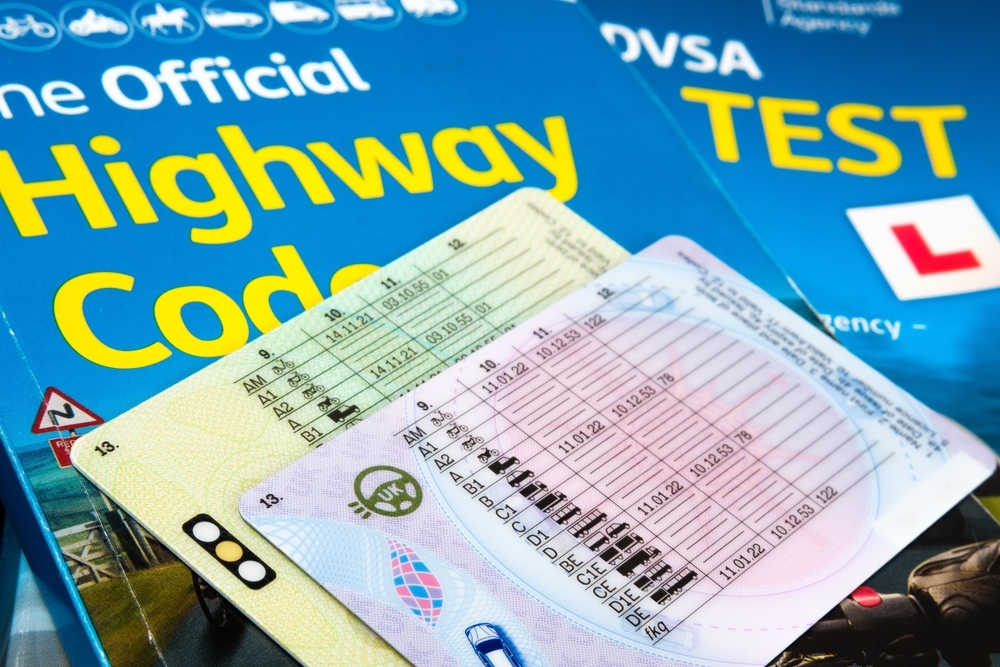In recent years, as cashless payments have become more common, the use of QR codes has grown...
When we’re learning to drive (or refreshing our knowledge of the rules of the road) it’s important to understand how to interpret the specific words used in the Highway Code. Every instruction and rule in the Code is carefully worded, and terms like must/must not, should/should not, and do/do not each carry different meanings and levels of importance. Knowing what these words actually mean in practice can make the difference between doing the right thing - and breaking the law!
What is the Highway Code?
The Highway Code is a set of rules and guidelines for all road users in England, Scotland and Wales, to ensure road safety and support a sustainable transport system, with a view to reducing road casualties.
Many of the rules in the Code are legal requirements, and if you disobey these rules you will be committing a criminal offence. As a consequence you may be fined, given penalty points on your licence or be disqualified from driving, and in the most serious cases you could even be sent to prison. If this makes you want to brush up your knowledge, you can find the full contents of the Code and the explanatory notes here.

What ‘must' and ‘must not’ mean
When you see the words ‘must’ or ‘must not’ in the Highway Code, these are legal requirements, and not just advice. They indicate that the rule is supported by a specific law, usually from the Traffic Acts or other road safety legislation. Breaking a ‘must' rule is a criminal offence and can lead to penalties such as fines, points on your licence, disqualification, or even imprisonment depending on the seriousness of the offence. The ‘must’ and ‘must not’ rules include an abbreviated reference to the legislation which creates the offence.
For example, Rule 109 states that you must obey all traffic light signals and traffic signs giving orders, as required by the Road Traffic Act 1988. This isn’t optional - failing to comply would be breaking the law. Similarly, Rule 144 reminds drivers that they must not drive dangerously or without due care and attention - a direct legal requirement under the same Act. Another everyday example is Rule 97, which says you must ensure that you have a valid licence and insurance before driving.
In practice, anything labelled with ‘must’ or 'must not’ is a compulsory rule. You have no discretion in whether or not to follow it, and you should always assume that failing to do so could result in legal consequences.

What ‘should' and 'should not’ mean
These are advisory rules, rather than legal requirements, and while failure to comply with these types of rules of the Code will not, in itself, cause a person to be prosecuted, The Highway Code may be used in evidence in any court proceedings under the Traffic Acts to establish liability.
The words ‘should’ and ‘should not’ therefore indicate strong recommendations, not direct legal requirements. These rules describe what safe and responsible drivers are expected to do in normal circumstances. You won’t automatically break the law if you fail to follow them, but if you are involved in an accident, the courts or insurance companies can use your failure to follow these recommendations as evidence of careless or dangerous driving.
Rule 160 offers a good example - it says you should drive with both hands on the steering wheel where possible. This isn’t a law, but it’s good practice for maintaining control of the vehicle. Rule 131 advises that you should keep between lane dividers (the short, white lines used on wide carriageways to divide them into lanes), which obviously makes sense. Another example, Rule 179, explains that you should use your mirrors well before turning right, to make sure you know the movement and position of traffic behind you. Whilst probably hard to enforce and subsequently prove you didn’t do these, following this advice keeps traffic flowing safely, prevents congestion and should help to prevent an accident occurring.
In essence, ‘should’ and ‘should not’ are there to promote good habits. They form the backbone of safe, responsible driving and should be followed unless you have a clear, safe reason not to in a specific situation.

What ‘do' and 'do not’ mean
These terms are used for clear safety warnings and common-sense instructions. These phrases are often about preventing danger, confusion or discourtesy, and while they are not legally enforceable, they are still important for keeping our roads safe. They have the same standing as the ‘should/should not’ rules, in that they can be used in evidence in court proceedings to show liability.
For example, Rule 146 says do not treat speed limits as a target. This means that just because a road’s limit is 60 mph doesn’t mean it’s always safe to drive at that speed - you should adjust according to the conditions. Rule 207 warns you to not hurry older pedestrians who may need extra time to cross the road by revving your engine - not nice! Another key example is Rule 195, which states not to wave or use your horn to invite pedestrians to cross the road, as this could cause confusion and danger if another vehicle is approaching.
While ‘do not’ statements may not be backed by law, they are still very serious warnings. Ignoring them might not lead to prosecution in itself, but doing so could contribute to an accident or make you partially liable if one occurs.

In a nutshell, the meanings are as follows:
• ‘Must’ and ‘must not’ rules are legal obligations that you are required to obey.
• ‘Should’ and ‘should not’ rules are strong recommendations and advice that define safe, responsible behaviour.
• ‘Do’ and ‘Do not’ instructions are clear safety warnings designed to prevent risk or confusion on the road.
So now we know! Understanding these differences helps you not only stay within the law but also helps you drive both safely and confidently - while protecting other road users too.
Happy driving (and reading)!






